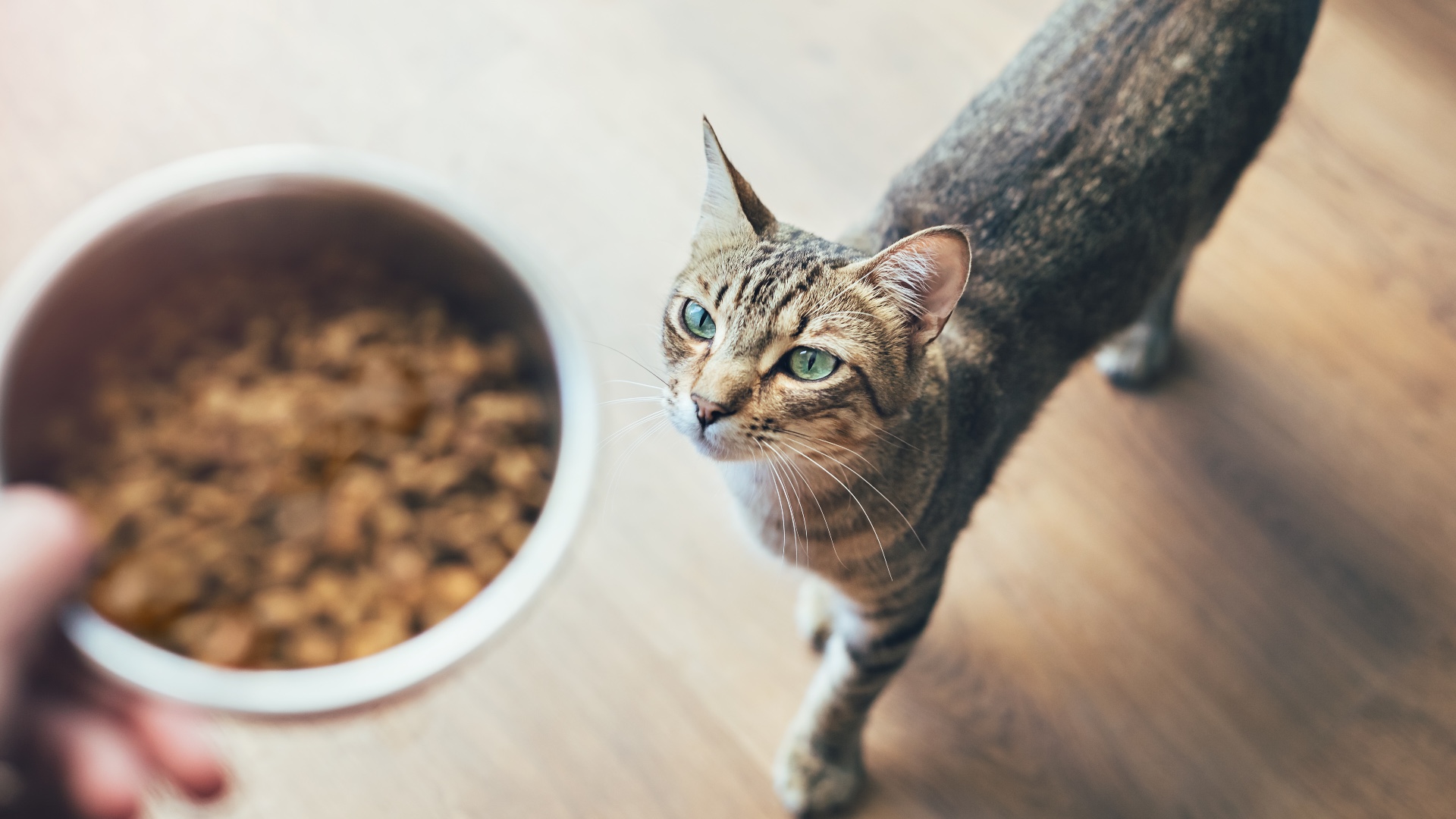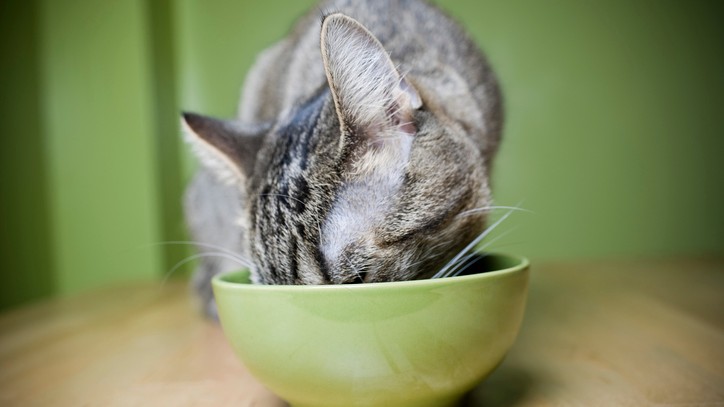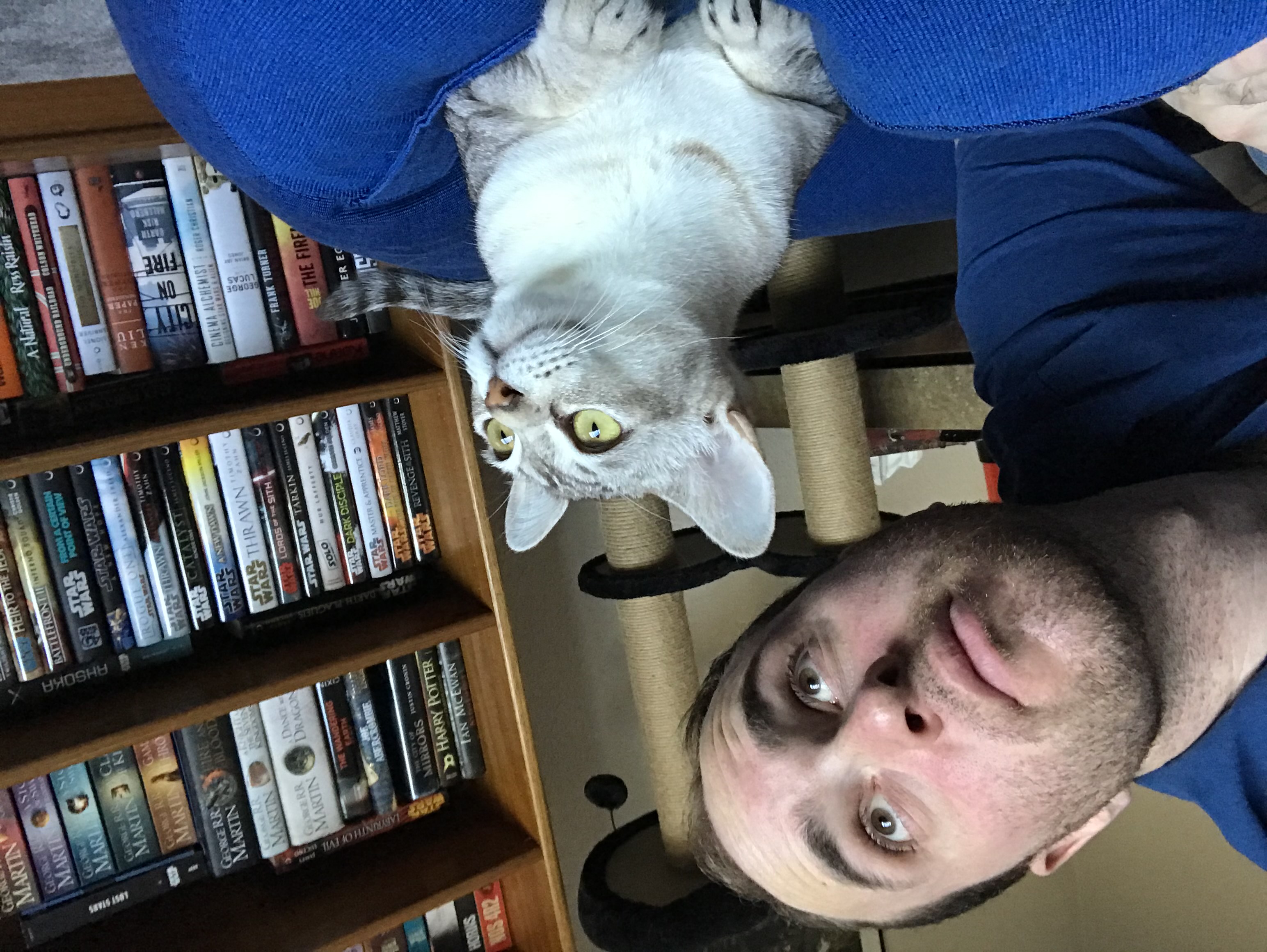Purina vs Royal Canin cat food: Which one should you pick?
We examine Purina vs Royal Canin cat food to see which one comes out on top when it comes to price, quality of ingredients, and variety.

When it comes to Purina vs Royal Canin cat food, you may be wondering if one is better than the other when it comes to providing your feline friend with all the nutrition they need to stay fit and well.
The best cat food arena can feel like a bit of a minefield at times, with so many brands claiming to be number one. But the good news is that when it comes to Purina and Royal Canin, both are good choices — they just excel in slightly different areas.
Just like the question of is dry cat food best or is wet food better, there really is no right or wrong decision when it comes to choosing between these two heavyweights. Both offer nutritionally complete and balanced wet and dry food options, however, where they differ somewhat is their ingredient list and their prices.
To help you decide which brand to fill your kitty’s food bowl with, we’ve done a deep dive into what Purina and Royal Canin have to offer, examining everything from reputation and variety of products to quality and cost. Let’s take a look…
Purina vs Royal Canin: Background
Purina is one of the oldest pet food companies in the world, having been founded in 1894, expanding and growing in popularity over the years. Its 2001 merger with Swiss food company Nestlé allowed it to expand even further, and to this day it remains at the forefront of the cat food market.
Vets always seem to speak highly of Royal Canin, and it’s no surprise, considering the company was founded by one. In the 1960s, French vet Jean Cathary started experimenting with his own cat food formulas in response to a number of skin complaints suffered by his customers’ cats. Such was his success that he created his own cat food line, which continues to this day.
Purina vs Royal Canin: Price
Purina is one of those brands that has something for everyone. Offering a selection of products that span the range from budget buys to more premium picks, Purina has made sure that there's a cat food in their product line that's accessible to all pet owners. Expect to pay around $17 for 24 cans of wet food in the Friskies range up to around $29.00 for a 16 lb bag of Purina ONE kibble.
Get the best advice, tips and top tech for your beloved Pets
When it comes to Royal Canin, let's not beat around the bush. This brand is significantly more expensive than Purina and that's potentially going to make it a no-go if you're on a tight budget. To give you an idea of the difference, 24 cans of wet food from Royal Canin will set you back around $45, while a 15 lb bag of kibble is likely to cost around $57.
Some may argue that you’re getting food of a higher standard with Royal Canin, but in all honesty, it really depends on what your cat’s requirements are.
Purina vs Royal Canin: Quality of ingredients

We like that Purina tries to use real meats as its primary ingredient wherever possible. This is the case in its Purina ONE Tender Selects Adult Dry Cat Food (chicken), Purina Cat Chow Gentle Dry Cat Food (chicken), Purina ONE Indoor Advantages Dry Cat Food (turkey), and Purina Beyond Simply Adult Dry Cat Food (white chicken and whole oatmeal).
The benefit of this is that your cat is getting a clean and reliable source of protein, with very little in the way of artificial preservatives. Furthermore, Purina is transparent regarding the sourcing of its ingredients, so you’re left with no doubt as to what’s in your cat’s food, and what’s gone into creating it.
One of the big issues with Purina is that although they have a good reputation, they tend to be lacking in consistency when it comes to the quality of their products, with some clearly being head and shoulders above others in terms of ingredients.
Take Friskies as an example. Yes, it's super affordable and that's a huge plus if you find that the higher-end lines in the Purina range simply aren't accessible to you due to cost. But what you gain in affordability can be lost when it comes to quality, with Friskies containing animal by-products instead of real meat and with a dose of artificial flavors to top it all off.
When it comes to Royal Canin, part of what makes the brand so appealing is the way that each formula has been specially tailored to meet specific conditions. One such example is the Gastrointestinal Fiber Response Dry Cat Food, which has been proven to help relieve constipation suffered by many cats.
While brands like Purina undoubtedly offer reliable all-round diets, their products can be inconsistent when it comes to the quality of ingredients. Royal Canin tends to be more rigorous about ensuring they use high-quality ingredients across the board, so its line of cat food is well worth considering if you're looking for a brand that offers an unrivaled capacity to concern itself with cats who have specific ailments, something that gets a huge round of applause from us.
That being said, we do have to remove a few points for the high level of carbohydrates that are present in a lot of their products. While this isn't such an issue for active cats, it could cause weight gain and even obesity in those that live a more sedentary lifestyle.
Products where this could be the case include the Royal Canin Veterinary Diet Urinary SO Moderate Calorie Dry Cat Food and Royal Canin Gastrointestinal Fiber Response Dry Cat Food (this also has high plant-based content, which isn’t the best source of vitamins). While they're great for cats with particular conditions, they may be less ideal as a day-to-day food source.
Purina vs Royal Canin: Choice
First off, there are a number of different imprints within the Purina brand, offering customers a variety of choice. For instance, Purina ONE is its highest quality food, Friskies is aimed at lower budgets, and Beyond focuses on formulas with natural ingredients.
While there's an excellent selection of Purina products available, they're not yet in the league of Royal Canin, which has an extensive catalog of wet and dry cat food to suit every age, stage, breed, and need. It also offers far more flavors than Purina, which is great if you have a fickle fur baby who likes lots of variety.
Purina vs Royal Canin: The verdict
To summarize, Purina has a lot of positive things about it. While it doesn't have as many products as Royal Canin, there is still plenty to choose from, and you can be sure that its food is of high quality. Moreover, Purina has always been transparent when it comes to the source of its ingredients, so you will always know where your money is going.
While Royal Canin has a reputation for quality supported by vets, and comes in a wide variety of forms to suit your cat’s requirements, some of its products may not be the best all round choice for everyday consumption, and there’s also the high price to consider. Still, its long-standing reputation should serve as a confidence booster for any potential customer and, while the levels of carbohydrates and plant-based content are high in some products, it deserves its reputation as a trusted brand of good quality cat food.
Not convinced that a wet or dry food off the shelf is right for your feline? We explore whether homemade cat food is better than store bought to help you make an informed decision.
Steve writes and proofreads buying guides, news stories and advice for Pets Radar, drawing on his lifelong experience as a pet owner. Currently sharing his house with two cats and a dog, he draws on the many highs and occasional lows of pet ownership he has borne witness to in his writing. He has worked in publishing for 15 years as an editor, sub editor and writer on a range of titles, such as SciFiNow, How It Works, All About History, Real Crime and Horrorville. You can follow him on Twitter @stevewright22

